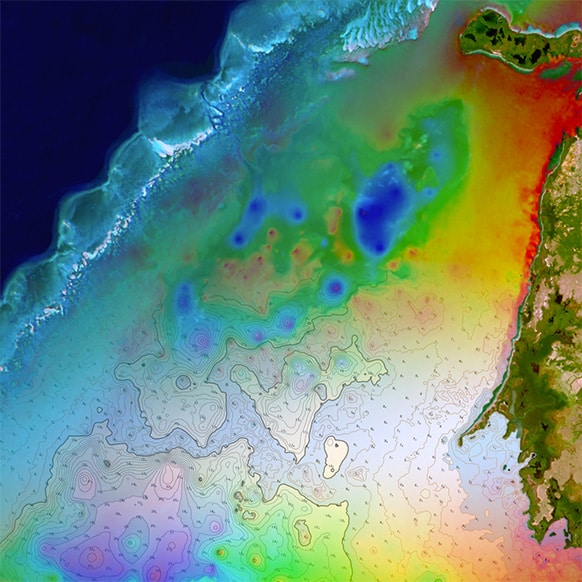
What is Hydrospatial?
Though only recently coined by pioneering bathymetry professionals, the term “hydrospatial” still strikes at the core of TCarta’s mission as a company. But what does it mean, exactly?
While “geospatial” describes data associated with a geographic location on Earth, “hydrospatial” refers specifically to the analysis of and access to marine data, including depth measurements and descriptions of physical features in oceans, seas, coastal areas, lakes, and rivers.
At TCarta, we were some of the first innovators to adopt a space-based approach to producing bathymetric charts and datasets. Using remote satellite imagery and satellite derived data points, TCarta:
- Surveys the physical seafloor, gauging water depth, identifying and classifying features, detecting hazards and measuring coastal erosion via coastal bathymetry
- Gauges biomass volumes and tracks sargassum mats with remote sensing satellite images
- Predicts and monitors harmful algal blooms, analyzes seasonal patterns, and determines the health of mangroves and reefs
- Assesses the health of marine environments remotely over time and produces future forecasts
- Provides water quality and temperature time series data to offer remote chemical analyses, both for microsites and on a large continental scale

As a leading satellite-derived bathymetry provider, TCarta plays a vital role in filling gaps in hydrospatial data worldwide. We’re a proud contributor to global ocean-focused initiatives, like Seabed 2030, the collaborative effort to map the entire ocean floor by 2030. We were also collaborators with the United Nations Decade of Ocean Science, dedicated to reversing the cycle of decline in ocean health.

